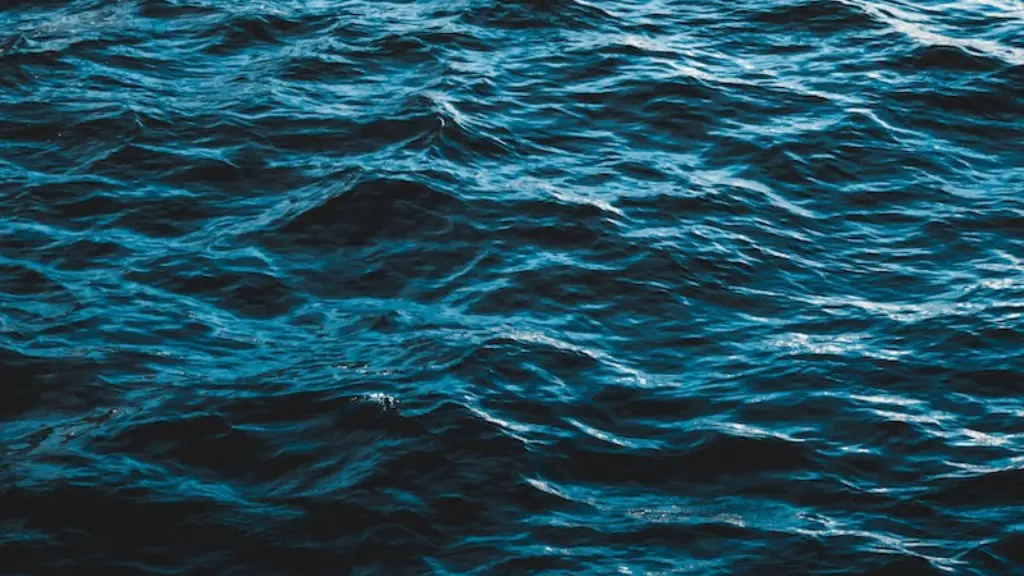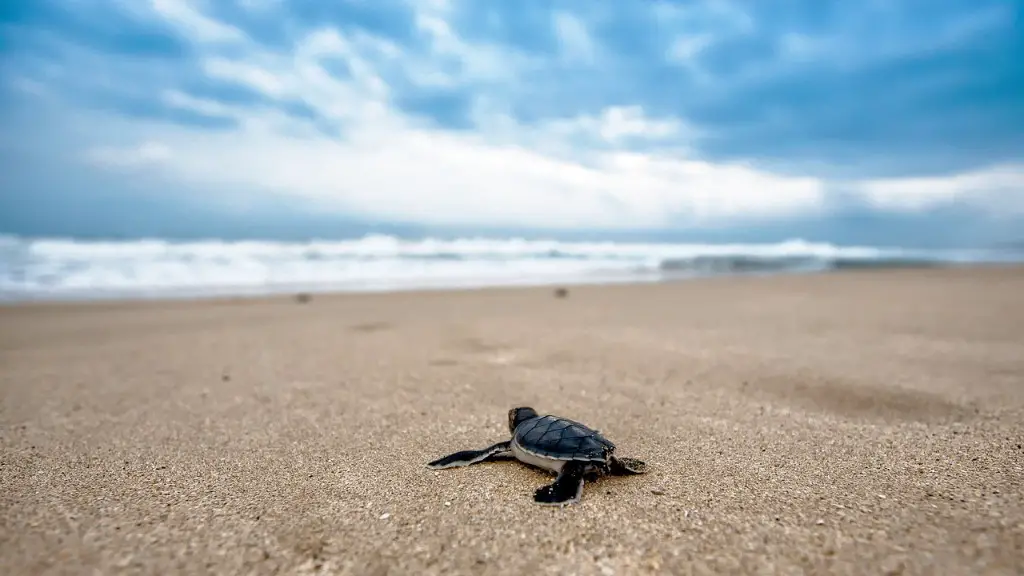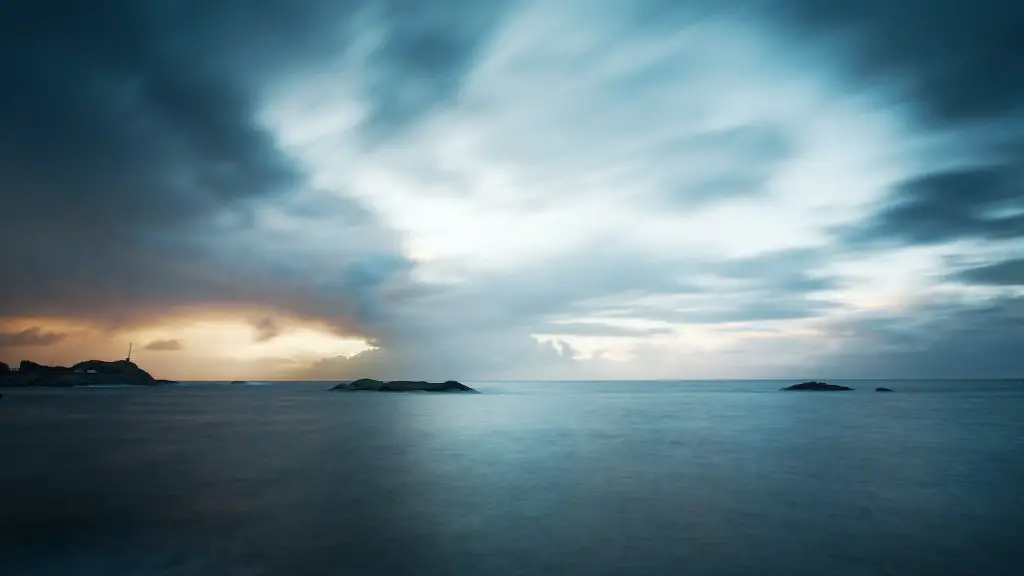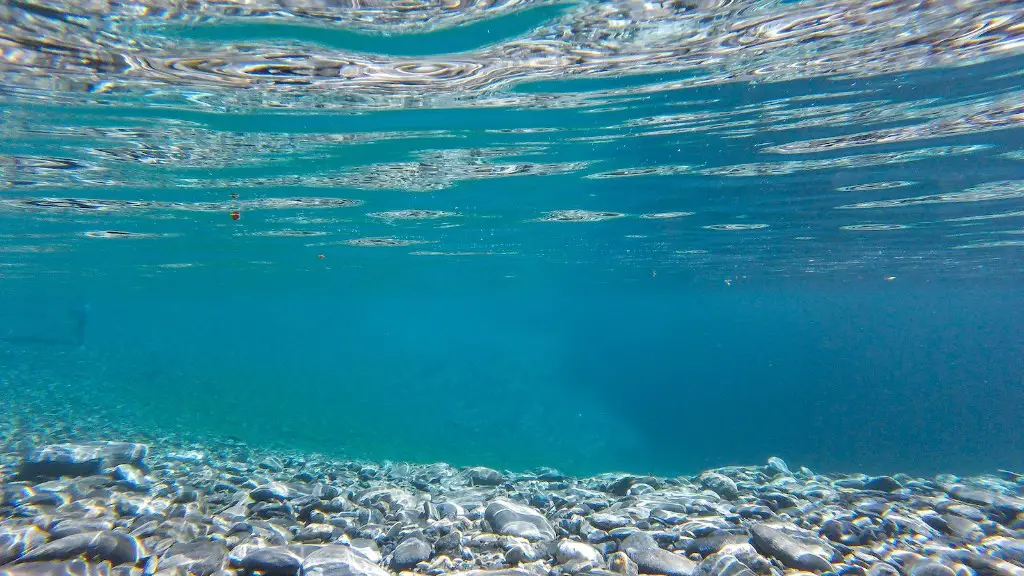Introduction
The Mediterranean Sea is both an iconic landscape and a vital resource. This sea, which lies in the heart of some of the oldest natural and human civilizations, is bordered by both the Occidental and Oriental territories of Europe, Asia, and Africa. Its surrounding countries, states, and regions have been inarguably shaped by its presence throughout history. Its culture and impact can be widely felt in any part of the European, Asian or African coasts. The immense size and location of the Mediterranean Sea touch a different landmass in every corner. This article will discuss what continents touch the Mediterranean Sea.
Historical Context
In Greek mythology, the Mediterranean Sea was created by Poseidon, God of the seas and oceans. In antiquity, ‘Mare Nostrum’ (Our Sea) was shared by numerous civilizations and formed part of their trade and communications route. Through its waters, sailors explored the region and made voyage to different regions with cities and civilizations that existed in harmony. Today, the Mediterranean Sea holds great strategic and economic value, as its location cuts through both East and West, North and South. It is a lifeline between Europe and North Africa, connecting the Atlantic Ocean with the Indian Ocean. The Mediterranean Sea is a place of great earthly beauty, with its deep blue colors on the horizon and its numerous coves and beaches.
Geopolitical Influence
The Mediterranean Sea has had a major influence over the political and social history of the regions it touches. This was especially evident in the Middle Ages, when battles were fought to gain control of the area. It is also the region most closely associated with the Roman Empire and the Greek world. The shores of the Mediterranean are densely populated and heavily used for shipping and travel between Europe, Africa, and the Middle East. This has been a great influence on the economies and cultures of the countries surrounding it. The Mediterranean has become a hub for tourism, as many people flock to its coasts and islands every year to enjoy its unique beauty and culture.
What Continents Touch The Mediterranean Sea?
The answer to this question depends on how you are counting continents, but in general the countries that border the Mediterranean Sea are part of three continents. Those are Africa, Asia, and Europe. In Africa, the countries that touch the Mediterranean Sea include Egypt, Libya, Tunisia, Algeria, Morocco, and Western Sahara. In Asia, the countries are Turkey, Syria, Lebanon, and Israel/Palestine. In Europe, the countries that touch the Mediterranean Sea include Spain, France, Italy, Monaco, Croatia, Slovenia, Montenegro, Albania, Greece, Malta, and Cyprus.
The eastern end of the Mediterranean Sea also connects to the Black Sea, which is generally considered part of the Eurasian continent. The Black Sea countries that border the Mediterranean Sea are Romania, Bulgaria, and Ukraine.
Economics of the Mediterranean
The Mediterranean Sea has played a major role in global economics since ancient times. Its natural resources have made it a famously prosperous region since antiquity. Its influence on global markets continues today, as the Mediterranean is densely populated with shipping routes that transport goods to and from countries all around the world. This makes it a major player in the energy, fishing and transportation industries.
The Mediterranean Sea is also home to some of the most important fishing grounds in the world. The main species caught here are tuna, swordfish, grouper, sea bass, and mackerel, and the countries that fish this area rely greatly on it for food and income.
The Mediterranean is also one of the most popular and accessible travel destinations in the world, with a massive influx of tourism each year. With its mild climate, crystal blue waters, and abundant cultural exchange, the Mediterranean Sea has been attractive to travellers for centuries.
Environmental and Climate Issues
The Mediterranean Sea is an important and fragile eco system, and it is facing many challenges. The Mediterranean Basin is one of the most environmentally impacted regions in the world. Rising sea levels, overfishing, pollution, habitat destruction, and climate change have all contributed to the decline of the marine life. Increasing demand for natural resources has caused a strain on some species, and this, combined with climate change, has caused some to become endangered or extinct.
In recent years, conservation efforts have been put in place in order to protect and sustain Mediterranean marine life. Local governments, international organizations, and ngos have been working together to reduce the impact of human activities on the Mediterranean Sea, such as reducing pollution, protecting endangered species, and restoring habitats.
The Importance of Maritime Law and Disputes
The Mediterranean Sea is a crucial international waterway, and is subject to longstanding maritime laws and disputes between countries and organizations. This waterway also has many economic and military components, with numerous boundaries, areas of jurisdiction and overlapping claims. Several international organizations such as the Hague International Tribunal and the International Maritime Organization (IMO) are tasked with overseeing and resolving disputes concerning the Mediterranean.
The IMO, which is the governing body responsible for the maintenance of navigational safety and security in the Mediterranean, works with regional organizations and countries to regulate maritime laws and disputes. Over the past few years, the IMO has introduced new rules and regulations to manage and settle maritime disputes. This includes the regulation of fishing activities, the control of maritime pollution, and the enforcement of international maritime law.
International partners such as the European Union (EU) have been actively engaged in resolving disputes in the Mediterranean Sea. The EU has been a strong advocate for improving maritime safety and securing the rights of its citizens in the area. Furthermore, the EU has been at the forefront of efforts to combat maritime crime such as piracy, drug trafficking and illegal fishing, as well as identifying and prosecuting those responsible.
Relationships between Mediterranean Countries
The countries around the Mediterranean Sea have had a long and complex history, and the relationships between them have had a tremendous impact on the region. This includes both friendly and hostile interactions, often with the Mediterranean Sea as the great divide. Political turmoil, religious conflict and economic disparity have all been key factors in the relationships between these countries over the years.
Trade and commerce have also been an essential component in the relationships between Mediterranean countries. For example, in 2018 the EU signed EuroMed Free Trade Area Agreement, which abolished tariffs for businesses trading in the region and eliminated certain restrictions for companies doing business in the Mediterranean. This has created a unified trade economy that has had a positive effect on cooperation efforts between Mediterranean countries.
The countries around the Mediterranean Sea have also been working to find diplomatic solutions to their conflicted relationships. In recent years, several initiatives have been put in place with the goal of strengthening ties between the countries and fostering peace and stability in the region. One of the most prominent initiatives has been the “5+5 Dialogue,” which is a dialogue between the five countries of North Africa (Algeria, Morocco, Tunisia, Libya, and Mauritania) and the five countries of the Western Mediterranean (Portugal, Spain, France, Italy, and Malta).
Modern Culture of the Mediterranean
The Mediterranean Sea is a hub of culture and religion. Throughout history, many cultures and religions have influenced the Mediterranean region and left their imprint. This includes ancient Greek, Roman and Persian influences. Yet, the Mediterranean is also a region where different religions and cultures continue to coexist. For example, the Mediterranean is a region with a long Jewish history, and many of the countries stretching from Europe to the Middle-East are considered to be part of the Levant, a region with predominantly Arab culture.
The Mediterranean Sea is also often seen as the “Mecca” of the arts and literature. Over the centuries, the Mediterranean has inspired many writers and artists, who have been drawn to its natural beauty and rich cultural heritage. This includes writers like Albert Camus, Mario Vargas Llosa, and J. R. R. Tolkien, and artists such as Pablo Picasso and Auguste Renoir. The Mediterranean has also been home to many important musical styles, including the flamenco and serenata, as well as musical instruments such as the oud and the darabuka.
The Mediterranean Sea is also a great culinary hub, incorporating food traditions from Europe, North Africa, and the Middle East. Its diverse cultures and landscapes have shaped its cuisine. Traditional dishes include hummus and falafel from the Middle East; paella from Spain; and bouillabaisse from France. The Mediterranean has also been an important source of natural ingredients and spices, with herbs like oregano, thyme, and rosemary being widely used for flavor and aroma in many dishes.
Water Connectivity of the Mediterranean Region
The Mediterranean Sea is connected to other bodies of water in a variety of ways. This includes the Aegean Sea, the Black Sea, the Adriatic Sea, and the Gulf of Sidra. These bodies of water are connected to the Mediterranean through the Strait of Gibraltar to the west and the Suez Canal to the east. The Suez Canal has been an important access route to the Mediterranean since its completion in 1869, and it is estimated to be responsible for over 8% of global trade.
This connectivity has enabled ships and vessels to easily reach the Mediterranean Sea and traverse its waters. This means that goods and people can be transported to and from the Mediterranean Sea in a relatively short period of time. It also allows for significant numbers of tourists to access the region every year, which helps to drive the local economy of the countries surrounding the Mediterranean.
The connectivity of the Mediterranean Sea has also played an important role in its geography and culture. This is especially evident in the development of trade routes and the spread of cultural elements. The interaction between the people and the cultures of the Mediterranean Sea, as well as the exchange of goods and commodities, has been a key element in the economic, social and political development of the region.
Conclusion
The Mediterranean Sea is a vital and influential region in the world, with a long and fascinating history. Its cultural, economic, and geopolitical importance extend far beyond its borders, and its influence on the regions around it is undeniable. The countries that border the Mediterranean Sea form a unique and diverse network, with deep cultural and historical ties. Yet, despite the diversity of the region, they are all united by the immensity of their shared body of water, the Mediterranean Sea.





